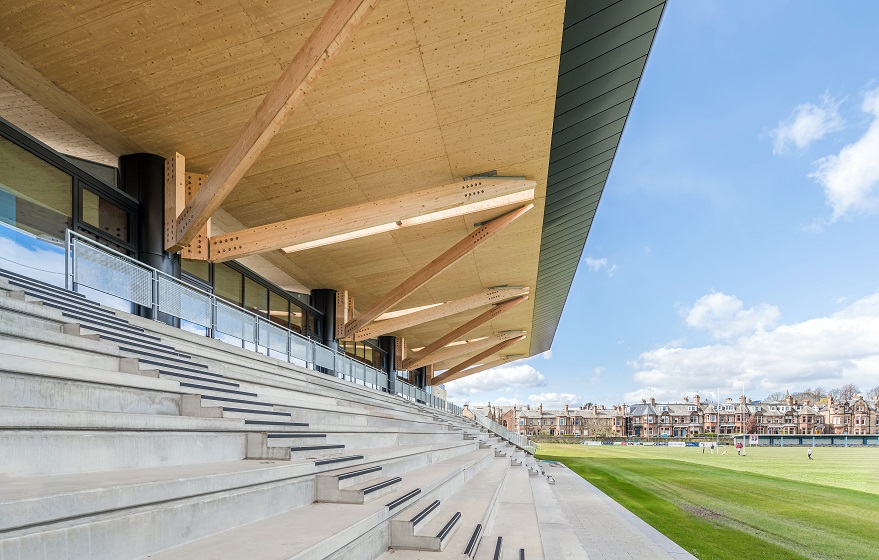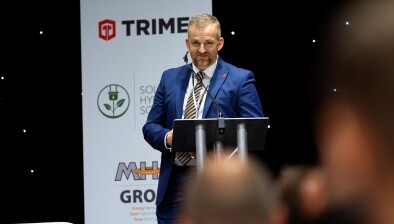Ewan Duffin: Addressing misconceptions - why timber is the positive change the engineering sector needs

Ewan Duffin
Ewan Duffin, associate director at Harley Haddow, on why the engineering sector should utilise timber and the misconceptions on expense, water damage and more.
With cement and steel contributing 6.5 % (2.5 million tonnes) and 7% (2.6 million tonnes) of global CO2 emissions1, it is crucial the industry shakes up the way it does things and takes action. With Net Zero targets drawing closer the sector must take sustainable methods seriously.
Timber is a topic that’s had everyone talking within the engineering sector, especially when it comes to the race to Net Zero. Timber is a natural material that sequesters carbon and is a much greener alternative to the energy intensive alternatives such as steel and concrete. With modern engineered mass timber products now more widely available, it’s versatility and capabilities have been improved. Engineered timber is now more widely used across various industries including office spaces, schools, homes and even sports centres.
Although mass timber is already in use in several areas, those in the industry may shy away from the unknown, which is understandable as steel and concrete have been the go-to in engineering for decades. Often there is a lack of understanding around the material, its properties, functions and benefits, but it is important not to write it off as a reliable resource without knowing the facts.
The most common misconceptions are that it is expensive, a fire hazard and more susceptible to damage – all of which are not entirely true. With the proper knowledge and expertise, efficient and considered design allows mass timber to outperform steel and concrete in many projects.

Raeburn Place Stadium, a Harley Haddow project (Image credit: Chris Humphreys Photography)
But what is engineered mass timber?
There are varying types of mass timber including cross laminated timber (CLT) and glue laminated timber. The general premise is that timber elements are glued together to fabricate more varied shapes with the direction of the natural grain aligned to optimise the structural performance. This allows timber to span further and support heavier loads than the traditional timber kit construction. Traditional kit is used throughout 75% of Scotland’s new homes2 and has been used in the region for decades, and now we are seeing mass timber start to enable timber to be used in larger buildings which were previously not possible to be built with timber kit.
Although the material cannot replace concrete and steel, it has various benefits to those who use it wisely. Evidentially, it is environmentally friendly and more sustainable, in more ways than one. Timber itself is a sustainable, low embodied carbon material, but it is also optimal for off-site construction. The material can be easily manufactured into structural elements to high precision and low waste, delivered to site in fewer deliveries and erected on site quickly. When timber is combined with off-site manufacturing the benefits are numerable.
To help dispel some of the common misconceptions around the material, here are my top tips for those who are contemplating implementing mass timber within their projects.
- Get to know the material. This is essential. Learn how it operates, its uses, its functionality. A benefit of mass timber is that it can easily be deconstructed and used again if needed, supporting circular economy principles, as well as often being used for the aesthetic finish, further reducing materials. There are various examples of this including office spaces as well as Harley Haddow’s own project, Raeburn Place, where we completed the first phase of the new stadium and rugby club facilities for the Raeburn Place Foundation.
- Educate yourself where possible. There are lots of resources out there and it is important to keep the conversation going and not shy away from the unknown. The industry tends to stick to what it knows and keep the familiarity of steel and concrete. Whilst mass timber isn’t the best material for all projects, there are innovative methods to utilise it to its full potential.
- Use it where you can. It’s important to replace concrete and steel where possible, especially with Net Zero targets looming. Adhering to environmentally friendly practices will set the industry up for success, if these practices are implemented correctly. Having said that, it is still a finite resource which needs to be used appropriately. Through a thorough understanding of the material and its strengths and weaknesses it is possible to utilise it responsibly to its maximum advantage on the right projects.
- If you are unsure, consult a professional. Implementing new materials can be daunting, but there are a variety of mass timber experts who can advise on best practice and how to utilise these effectively and efficiently within a project. Skilled professionals can help you overcome the design challenges of vibration, moisture management and fire engineering.
- Learn about costs. The most common assumption is that opting for timber can be expensive. However, when designed by experienced professionals many cost benefits can be achieved which can allow timber projects to become extremely competitive. The off-site manufacturing can provide significant programme savings, reducing financing and contractor costs. The lightweight nature of the structure can allow for significant foundation savings. The fact that the timber is often the exposed finish will also reduce finishing material costs. At Harley Haddow, we would advise getting a specialist involved with the project early on to help discuss these benefits and help to get greater cost certainty at an early stage in the project.
With Scotland taking the lead when it comes to utilising timber in the construction industry, and now starting to encourage other regions to utilise the resource, it is vital the industry keeps the sustainability momentum going, otherwise we will struggle to reach Net Zero targets by 2035.
The engineering sector has the potential to drive sustainability to the forefront but in order to achieve this we must utilise materials available to us, rather than recoiling from something new and innovative. For anyone unsure about mass timber, I would urge them to ignite the conversations and use available professional knowledge to their advantage.
Ewan Duffin, associate director at Harley Haddow, specialises in mass timber construction and sustainability. To add to this specialty, he is pioneering the consultancy’s work on Embodied Carbon and works closely with the Energy and Sustainability team.
















